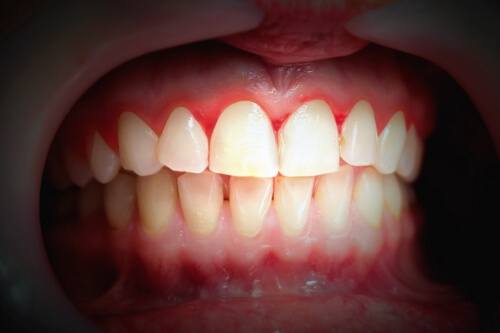Gum Disease Treatment Pecan Grove
Giving Your Smile a Strong Foundation

It’s important to visit your dentist for a regular checkup and cleaning. Brushing and flossing 2-3 times a day is not enough! Over time, tartar can build up, which harbors bacteria. Left untreated, this can lead to bone loss around your teeth called periodontitis.
In its early phases, periodontitis is easy to treat with scaling and root planing, also known as a “deep cleaning.” If the periodontal (gum) disease in your mouth gets worse, it can require more invasive treatments, such as gum surgery.
Read below to learn more about gingivitis and possible options for gum disease treatment in Pecan Grove. Otherwise, click below to schedule your cleaning or deep cleaning today!
How do I get gingivitis, and what can I do to treat it?

Proper brushing should take approximately 2 minutes each time, followed by flossing 1-2 times a day. Yet, many patients fail to follow proper oral hygiene. This can lead to inflammation of the gums due to an overwhelming presence of bacteria. Gingivitis is painless for the most part but is easily identified by puffy, red gums, bleeding, and occasional sensitivity.
Treating gingivitis isn’t too difficult if you visit the dentist early enough. A routine cleaning and sometimes antibacterial irrigation will be sufficient for immediate intervention. From there, it’s up to the patient to maintain consistent oral hygiene and routine checkups.
What exactly is periodontitis?

Periodontitis is a serious disease that often occurs in the presence of long-lasting, untreated gingivitis. It has many of the same symptoms as gingivitis, such as bleeding, puffy gums, and sensitivity. However, its distinctive feature is the loss of bone around the teeth. Patients in the early and middle stages of periodontitis are usually unaware they even have it. In the later stages, they may start to notice their teeth becoming loose and mobile. If left untreated, severe periodontitis will result in the loss of multiple teeth.
How do I treat periodontitis?

In order to treat gum disease, patients must undergo a procedure called scaling and root planing, or “deep cleaning.” Although it may appear similar to a regular cleaning, the major difference is that it also involves cleaning the root structure below the gums to remove necrotic tissue that has been invaded by bacteria. Other steps may be taken to help combat the bacteria and prevent oral health from regressing. Afterward, a patient with periodontitis must be placed on a 3-month cleaning schedule until their periodontal health is stabilized.
